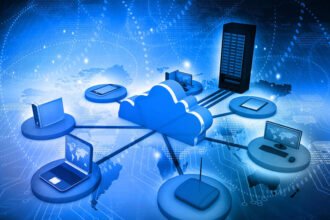There are a lot of benefits with cloud computing – cost-effective resource use, rapid provisioning, scalability and e
There are a lot of benefits with cloud computing – cost-effective resource use, rapid provisioning, scalability and elasticity. One of the most significant advantages to cloud computing is how it changes disaster recovery, making it more cost-effective and lowering the bar for enterprises to deploy comprehensive DR plans for their entire IT infrastructure. Cloud Computing delivers faster recovery times and multi-site availability at a fraction of the cost of conventional disaster recovery.
What Changes in the Cloud?
Cloud computing, based on virtualization, takes a very different approach to disaster recovery. With virtualization, the entire server, including the operating system, applications, patches and data is encapsulated into a single software bundle or virtual server. This entire virtual server can be copied or backed up to an offsite data center and spun up on a virtual host in a matter of minutes.
Since the virtual server is hardware independent, the operating system, applications, patches and data can be safely and accurately transferred from one data center to a second data center without the burden of reloading each component of the server. This can dramatically reduce recovery times compared to conventional (non-virtualized) disaster recovery approaches where servers need to be loaded with the OS and application software and patched to the last configuration used in production before the data can be restored.
The cloud shifts the disaster recovery tradeoff curve to the left, as shown below. With cloud computing (as represented by the red arrow), disaster recovery becomes much more cost-effective with significantly faster recovery times.
When introduced with the cost-effectiveness of online backup between data centers, tape backup no longer makes sense in the cloud. The cost-effectiveness and recovery speed of online, offsite backup makes it difficult to justify tape backup.
The cloud makes cold site disaster recovery antiquated. With cloud computing, warm site disaster recovery becomes a very cost-effective option where backups of critical servers can be spun up in minutes on a shared or private cloud host platform.
With SAN-to-SAN replication between sites, hot site DR with very short recovery times also becomes a much more attractive, cost-effective option. This is a capability that was rarely delivered with conventional DR systems due to the cost and testing challenges. One of the most exciting capabilities of disaster recovery in the cloud is the ability to deliver multi-site availability. SAN replication not only provides rapid failover to the disaster recovery site, but also the capability to return to the production site when the DR test or disaster event is over.
One of the added benefits of disaster recovery with cloud computing is the ability to finely tune the costs and performance for the DR platform. Applications and servers that are deemed less critical in a disaster can be tuned down with less resources, while assuring that the most critical applications get the resources they need to keep the business running through the disaster.
Critical Path in Disaster Recovery – Networking
With the sea change in IT disaster recovery delivered by cloud computing, network replication becomes the critical path. With fast server recovery at an offsite data center, the critical path for a disaster recovery operation is replicating the production network at the DR site including IP address mapping, firewall rules & VLAN configuration.
Smart data center operators are providing full disaster recovery services that not only replicate the servers between data centers, but also replicate the entire network configuration in a way that recovers the network as quickly as the backed up cloud servers.
More on DR in the Cloud
I predict we’re going to hear much more about the changes in DR strategies with the cloud over the next year as more and more enterprises revisit their DR plan in light of the advantages of cloud hosting.








